As the saying goes, if you can’t measure it, you can’t manage it. And SEO metrics and KPIs are the foundation of detailed business tracking.
These metrics are a key performance subset, showing a business’s exact successes and failures.
What Are SEO Metrics?
Search Engine Optimization (SEO) Metrics are quantitative data that measure the health and performance of a website.
What Are SEO KPIs?
SEO Key Performance Indicators (KPIs) are specific metrics related to search engine marketing. These metrics highlight successes and note areas of improvement for organic search results.
Recommended: SEO Keyword Generator
- Bounce Rate
- Clickthrough Rates
- Exit Rate
- Pages Per Visit
- Time On Site/Session Duration
- Crawl Errors
- Page Load Time
- Page Speed
- Overall Website Health
Track your SEO success and create optimized content effortlessly with the AI SEO Content Generator.
SEO Engagement Metrics show how well users interact with a web page. These metrics include:
1. Bounce Rate
Bounce Rate is the percentage of all site sessions users leave after viewing only one page.
Bounce Rate determines how effective a single page is at generating consumer interest.
How to Calculate:
(Single Page Visits ÷ Total Website Visits) x 100 = Bounce Rate

Example: (500 Single Page Visits ÷ 1500 Total Website Visits) x 100 = 33% Bounce Rate
Google Analytics displays Bounce Rate on the homepage.
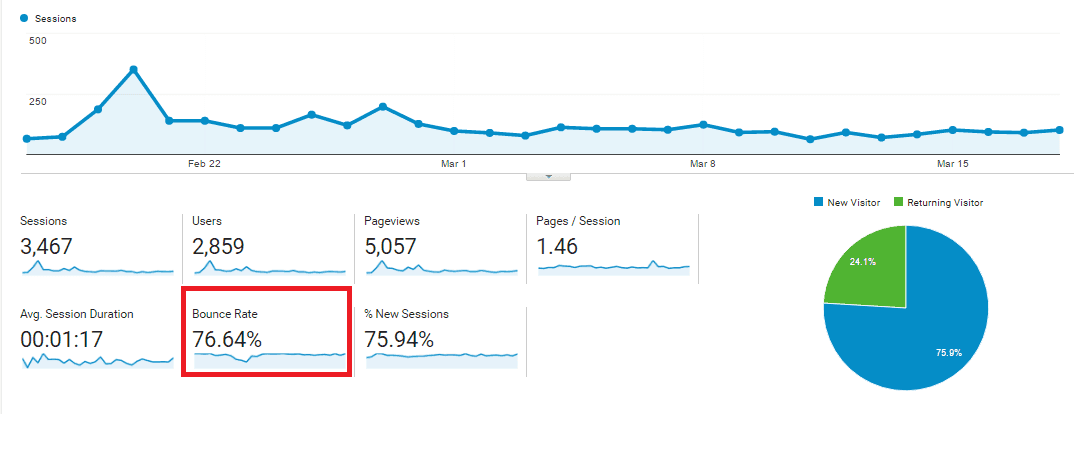
Recommended Reading:The Number One Way to Reduce Your Website Bounce Rate and Streamline Your SEO Projects with These Top-Tier Templates
2. Clickthrough Rates
Clickthrough Rates (CTR) refer to the ratio of views to clicks – a vital metric in gauging how well keywords perform.
How to Calculate:
(# of Clicks ÷ # of Views) x 100 = Clickthrough Rate
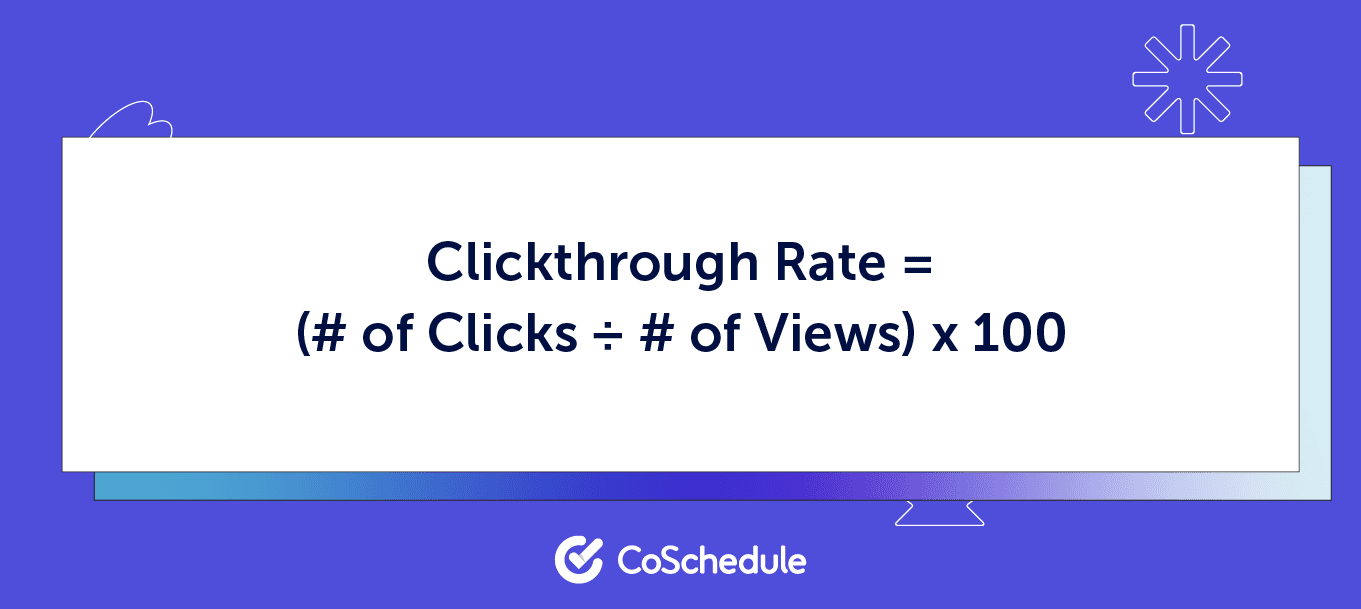
Example: (500 Clicks ÷ 1200 Views) x 100 = 41% Clickthrough Rate
Recommended Reading:What Are Good Email Click-Through Rates? We Share Our Data With You
3. Exit Rate
Exit Rate determines the number of users who leave a website after viewing a particular page.
Represented as a percentage, Exit Rate determines which website pages are causing visitors to leave quickly.
How to Calculate:
(Total Exits from a Page ÷ Total Visits to a Page) x 100 = Exit Rate Percentage
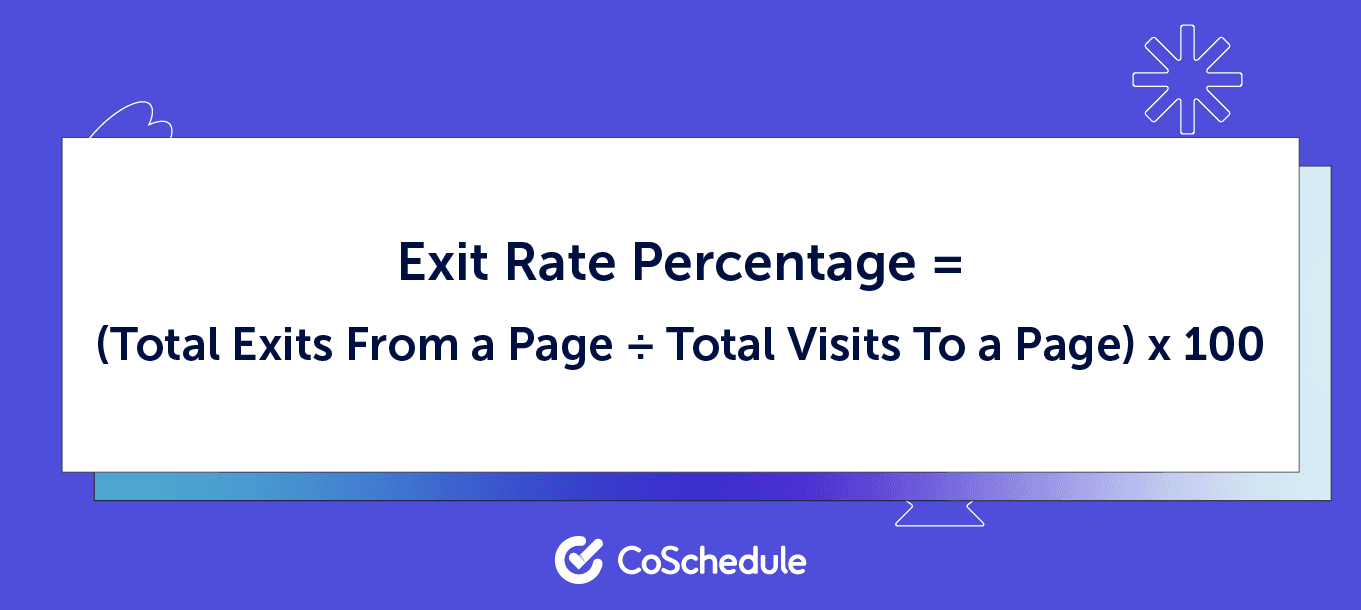
Example: (500 Exits ÷ 1200 Visits) x 100 = 41% Exit Rate
4. Pages Per Visit
Pages Per Visit determines the average number of pages a visitor views within a single website session.
How to Calculate:
(Total Page Views ÷ Total Website Visitors) = Pages Per Visit
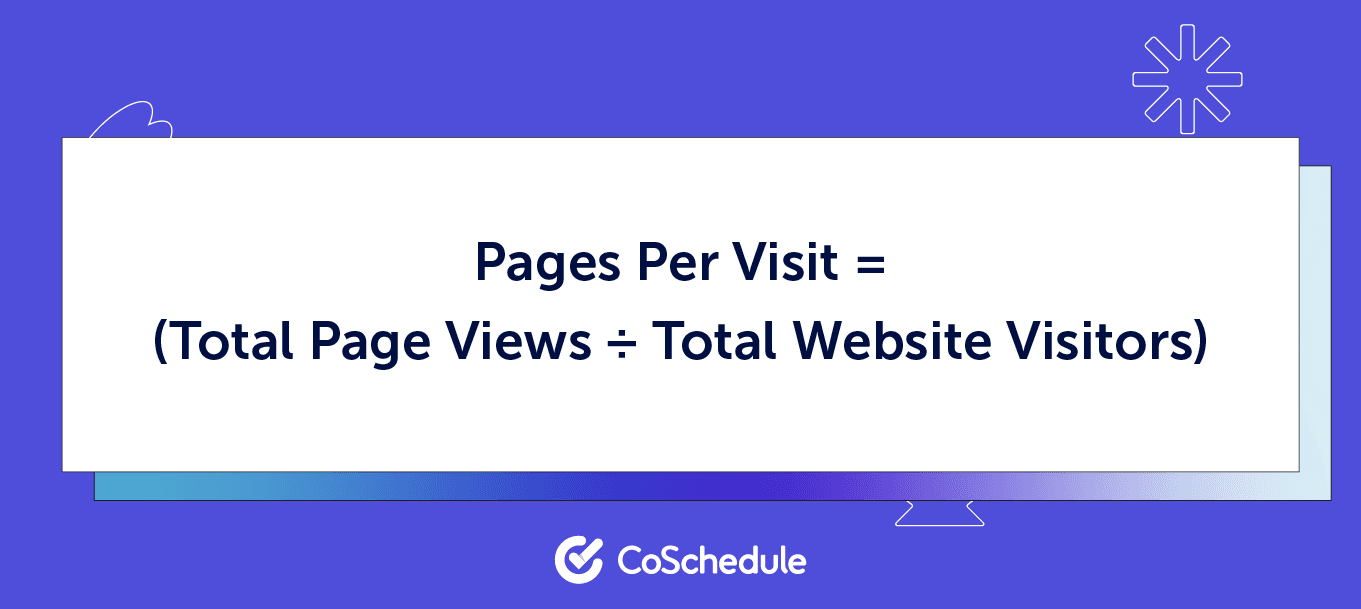
Example: 30,000 Page Views ÷ 45,000 Visitors = 1.5 Pages Per Visit
5. Time On Site/Session Duration
Time on Site or Session Duration refers to the average session length a user spends on a website.
Google Analytics displays Time on Page – or Session Duration – under audience overview.
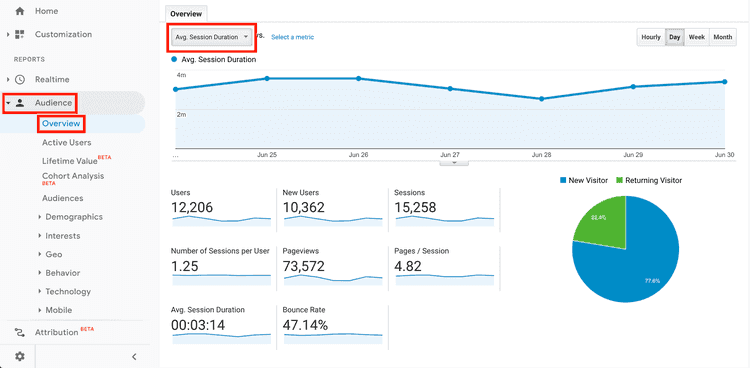
SEO Performance Metrics indicate how well the backend of a website is performing. These metrics include:
6. Crawl Errors
Crawl Errors are issues a search engine encounters when trying to access a webpage.

7. Page Load Time
Page Load Time is the time elapsed between an initial page click and a browser completing the content request.
40 percent of Internet users will abandon a web page if it takes longer than three seconds to load. Thus, the quicker a page can load, the higher chance a visitor will stay on that page.
8. Page Speed
Page Speed is the time a server takes to respond to a request. Unlike page load time, however, page speed does not account for loading all elements onto a webpage.
Fast page speed equivalates to a better user experience – a determining factor in search engine ranking.
9. Overall Website Health
Website Health measures the foundational well-being of a website, such as internal site issues and page speed.
Good site health leads to the following SEO benefits:
- Higher search engine rankings
- More credibility
- Better user experience
- Increased conversions, sales, and revenue
BONUS: 14 Other SEO KPIs To Measure Success
At CoSchedule, the following SEO KPIs are used to monitor SEO performance and drive organic results.
- Impressions
- Traffic By Channel
- Traffic By Tactic
- Backlinks
- Referring Domains
- Domain Authority/Domain Rating
- Indexed Pages
- Keyword Rankings
- Core Keyword Targets
- New Visitors Vs. Returning Visitors
- Organic Conversions
- Organic Traffic
- Pieces Published
- Page-Specific Core Web Vitals
1. Impressions
Impressions indicate how many times a relevant audience was shown a given page.
This metric represents an opportunity to influence potential customers and gauge brand awareness.
Recommended Reading:Content Optimization: How to Help Your Content Succeed in 12 Steps
2. Traffic By Channel
Traffic By Channel is the source by which traffic is generated to a website.
By using a variety of channels to derive traffic, prospective customer reach is expanded.
Traffic Channels include:
- Organic Search
- Paid Search
- Referrals
- Direct
- Social
Recommended Reading: 18 Marketing Channels: Types And Examples To Help You Choose Yours
3. Traffic By Tactic
Traffic By Tactic is traffic generated to a website by a specific marketing strategy.
At CoSchedule, our traffic tactics include measuring the CoSchedule Blog and different marketing hubs.

4. Backlinks
A Backlink refers to any hyperlink connecting one website to another.
Serving as a citation, backlinks signal that the website content is vouched – leading to a positive effect on search engine rankings.
Recommended Reading: Link Building: Definition, Importance, Qualities, & Ideas and Backlink Monitoring Tools: Working Mechanisms and Top Tools
5. Referring Domains
Referring Domains are web pages including one or more backlinks.
For example, if a web page has a singular backlink, one referring domain exists. If a web page has two backlinks, two referring domains exist.
Recommended Reading:How To Use Advanced Link-Building Tactics To Crush SEO
6. Domain Authority/Domain Rating
Domain Authority predicts the success of a site on a search engine.
Beyond basic web optimization issues, several factors directly influence domain authority, but most notably, the use of quality backlinks.
7. Indexed Pages
Indexed Pages are web pages that a given search engine stores in its database. For a page to be visible in a search engine, it must be indexed first.
To determine if a page has been indexed, use Google’s Indexed Page Checker.
8. Keyword Rankings
Keyword Rankings are how a site ranks in a search engine based on specific words.
Choosing the correct keywords will lead to higher-ranking pages, creating more organic search traffic.
Recommended Reading: Your Ultimate Content Marketer’s Guide to Keyword Research
9. Core Keyword Targets
Core Keyword Targets refer to any inquiry entered on a search engine. Researching and choosing keywords to match such search queries aids SEO.
These words then become the foundation of a written piece, as shown in the graphic below.
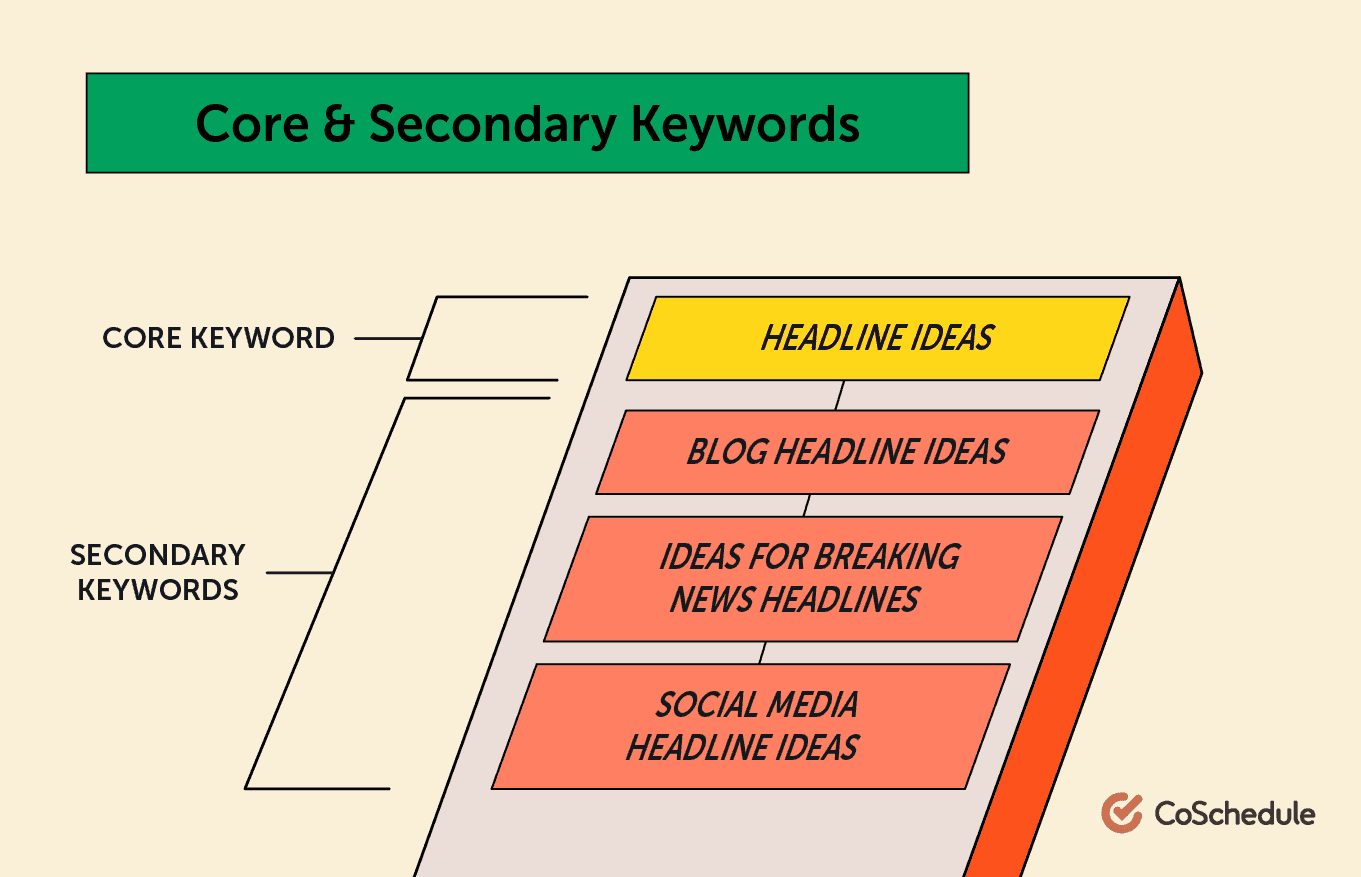
10. New Visitors Vs. Returning Visitors
New Visitors are new to a website, whereas returning visitors have previously visited the website and returned.
11. Organic Conversions
Any time a customer logs onto a website and carries out a specific action – registers for a newsletter, makes a purchase – a conversion occurs.
Organic Conversions naturally come from traffic generated by search engines due to relevance.
12. Organic Traffic
Organic Traffic refers to site visitors found through an unpaid source.
Benefits of Organic Traffic include:
- Attracting a Relevant Target Audience
- Increasing Conversions
- Better ROI
- Building Brand Awareness
Want more readers for your blog? Discover tips in ‘How To Increase Blog Traffic‘!
Recommended Reading:SEO Traffic Generation: How to Boost Your Organic Search Traffic
13. Pieces Published
Pieces Published refers to written works submitted for publication.
These pieces are specifically tailored to an audience and use specified keywords for SEO purposes.
14. Page-Specific Core Web Vitals
Page-Specific Core Web Vitals are specific factors a search engine considers vital in user experience. These factors include largest contentful paint, first input delay, and cumulative layout.
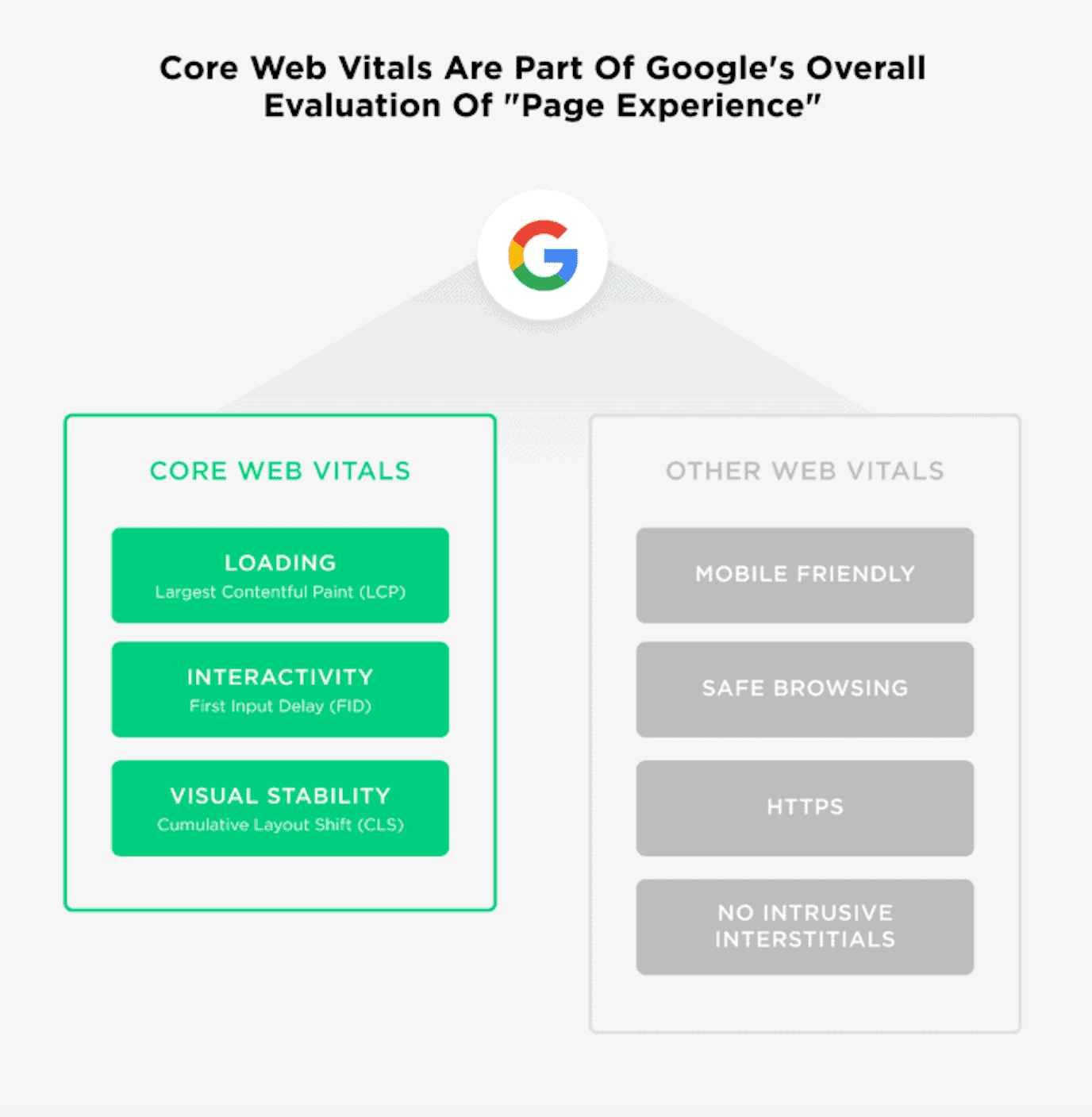
A website’s Core Web Vitals data can be found in the “enhancements” section of a Google Search Console account.
Track How AI Impacts SEO Metrics
AI tools like ChatGPT and AI-driven search algorithms are changing how users interact with content and perform searches. It’s important to track specific SEO metrics to understand AI’s impact on your digital strategy.
Key metrics include:
- Traffic by Channel & Organic Traffic: Monitor how AI search tools refer users to your site and the volume of organic traffic influenced by AI, adjusting content for better AI-first environment visibility.
- Bounce Rate & Clickthrough Rates (CTR): Analyze bounce rates and CTR from AI-driven traffic to evaluate if your content meets AI users’ needs and leads to conversions.
- Keyword Rankings & Impressions: Adjust your keyword strategy based on AI-driven search trends to ensure content relevance as AI shifts search intents.
- Time on Site & Pages per Visit: Use these metrics to gauge content engagement and relevance, indicating if AI-driven visitors find your content useful.
- Crawl Errors & Core Web Vitals: Monitor real-time SEO performance, including crawl issues and user experience metrics essential for optimizing both human and AI-driven traffic.
These metrics will help you leverage AI’s capabilities in SEO, ensuring your content remains effective and visible in an evolving digital landscape.
While keeping these metrics in mind, use the following suggestions to improve your own SEO and watch your website rise in search engine rankings.
- Improve your local SEO visibility
- Enhance your mobile performance
- Increase on-page optimization scores
- Improve text readability
- Use an SEO metrics tool
1. Improve Your Local SEO Visibility
Between 2016 and 2018; Google reported a 900 percent increase in mobile searches for “[Business] near me.” As of 2025, “near me” mobile search queries have increased by 136% in the last year. Additionally, 76% of consumers who perform a local search on their smartphone visit a physical store within 24 hours.
Thus proving local SEO visibility is a must for a business serving its community.
Top ways to enhance local visibility:
- Rank on Google Maps
- Optimize Google My Business
- Add a location page to your business website
- Create local content
- Improve internal linking structure
For example, when entering “places to eat near me” into Google, the top businesses ranked in Google Maps are shown. Improving your local SEO visibility on Google Maps can help you rank in that list of businesses.
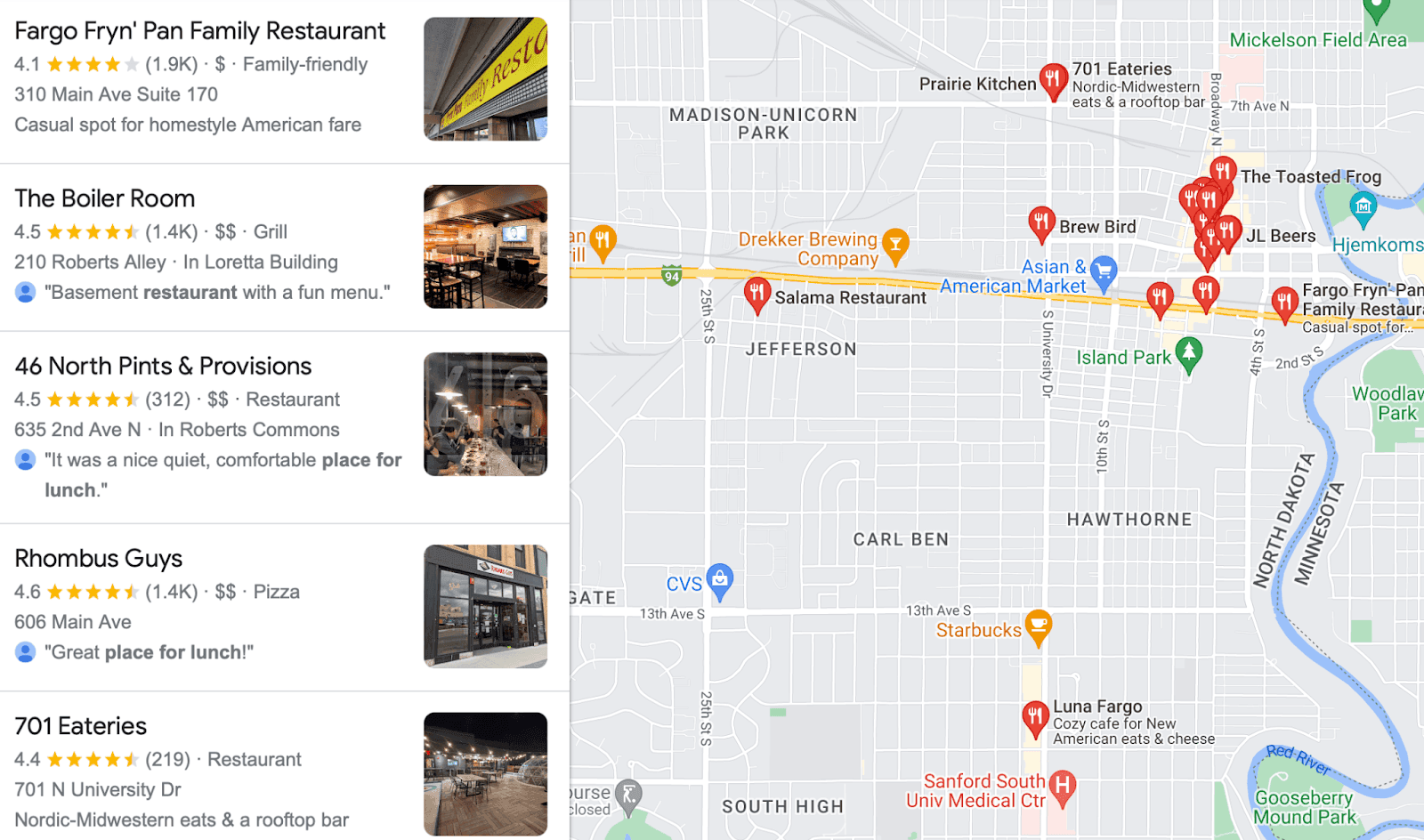
2. Enhance Your Mobile Performance
In 2021, mobile devices generated 54% of global website traffic. Additionally, 73 percent of web designers think non-responsive designs are the reason why consumers leave a site.
As of January 2025, mobile devices (excluding tablets) accounted for over 62% of global web traffic, highlighting the critical need for responsive web design. In fact, 73.1% of users leave websites due to non-responsive design, underscoring the importance of ensuring your site is mobile-friendly to retain visitors.
For marketers, these statistics mean that you must optimize content for mobile experiences.
Developing a stronger mobile presence begins by:
- Blogging, mobile in mind
- Creating pages to attract mobile searches
- Optimizing for voice search
- Enhancing visual content for mobile
3. Increase On-Page Optimization Scores
On-Page Optimization refers to any strategies implemented on a page to increase SEO.
On-Page SEO Factors Include:
- Quality of Content
- Page Experience
- Keyword Optimization
- Meta Description
- Title Tags
- URL Structure
- Core Web Vitals
- Internal Linking
4. Improve Text Readability
Text Readability is the reading difficulty of a written piece.
Good readability provides a satisfactory user experience and proves the content is digestible – two factors measured by Google.
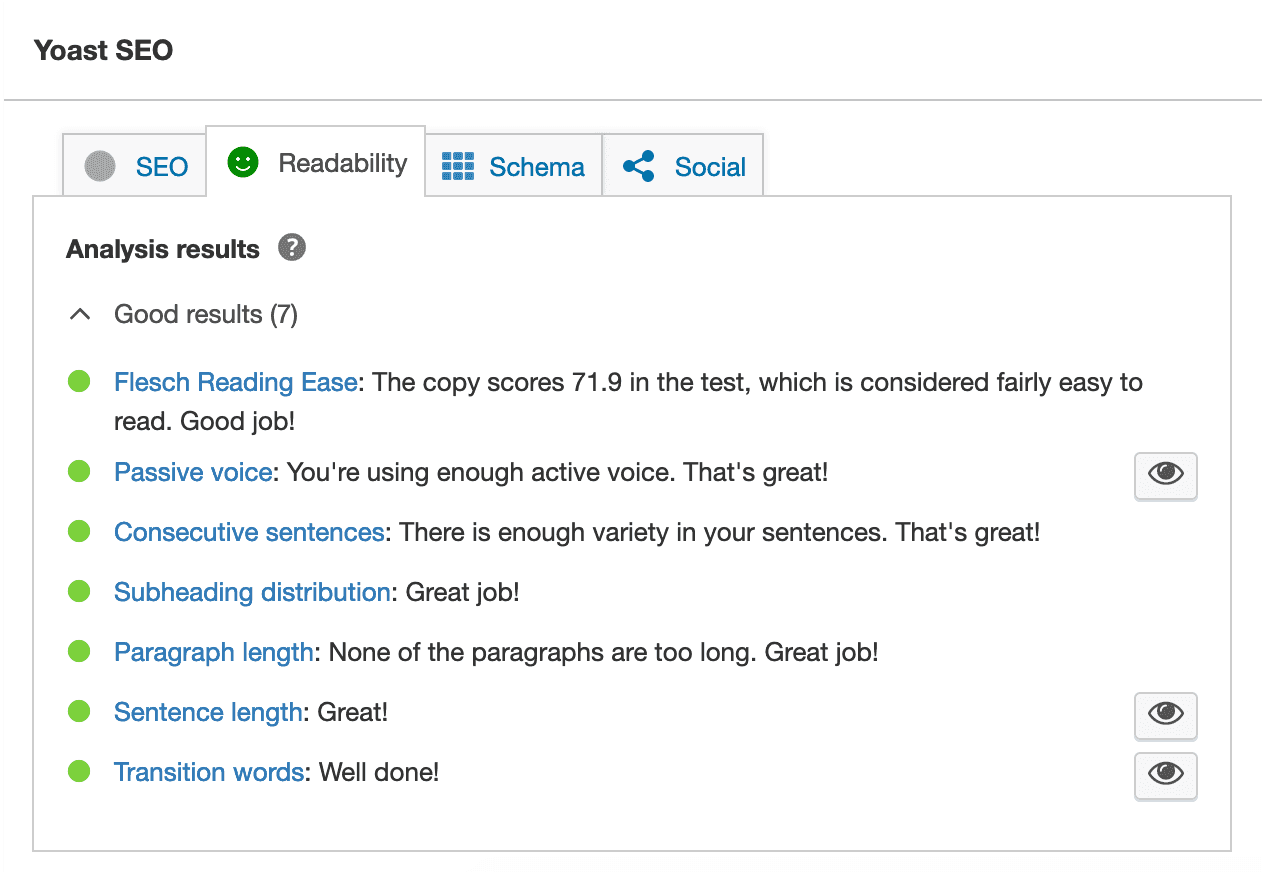
Tips for Better Readability:
- Use fewer syllable words
- Break long sentences into concise statements
- Use proper formatting and hierarchy
- Write conversationally
- Add graphics
5. Use An SEO Metrics Tool
Google Analytics
Google Analytics is a web analytics service providing basic statistical tools for SEO and marketing purposes.
Features include:
- Data Collection
- Website Analysis
- Traffic Reports
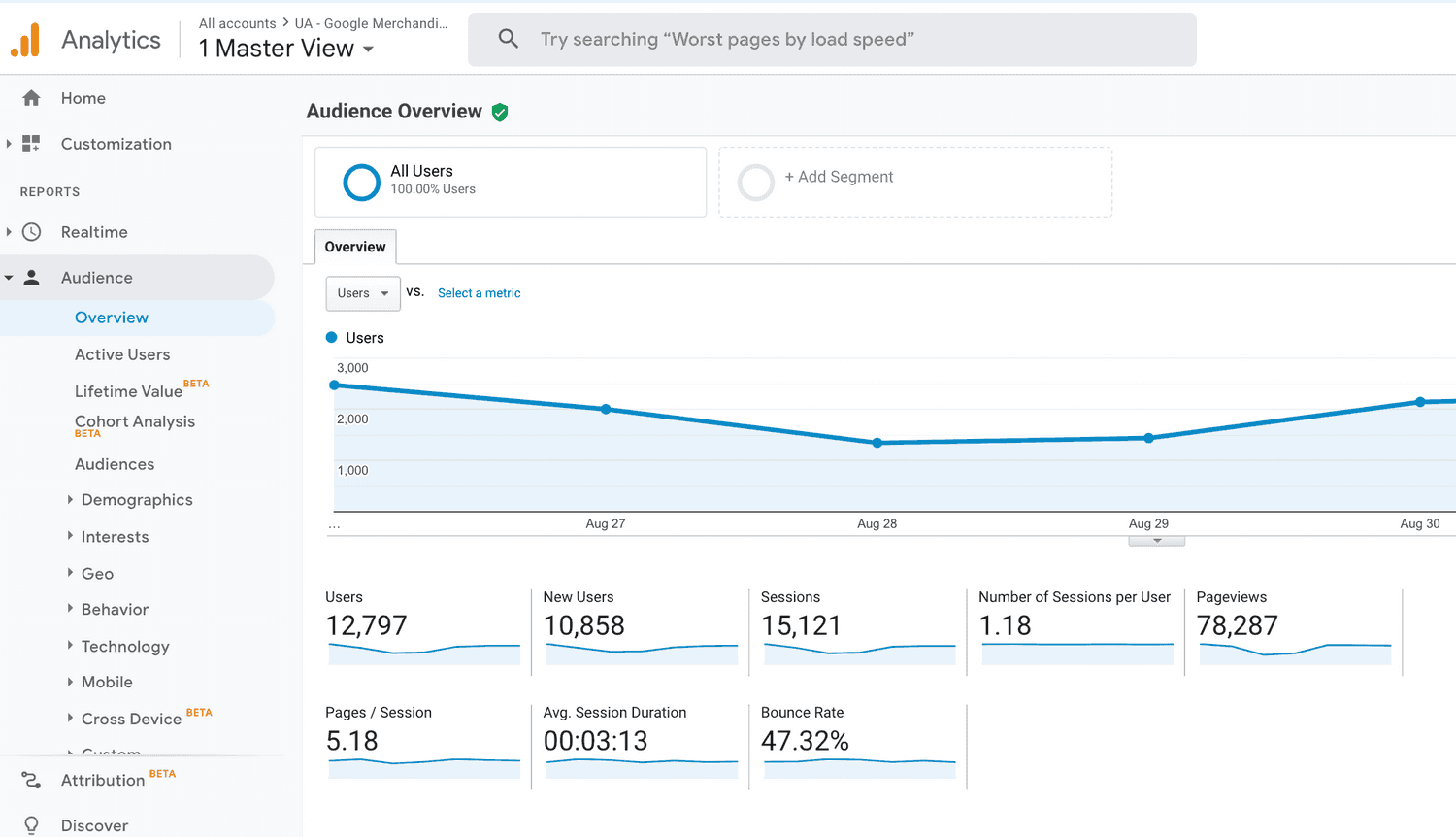
Ahrefs
Ahrefs is a software suite best used for search engine ranking optimization.
Features include:
- Link Building
- Keyword Research
- Competitor Analysis
- Site Audits
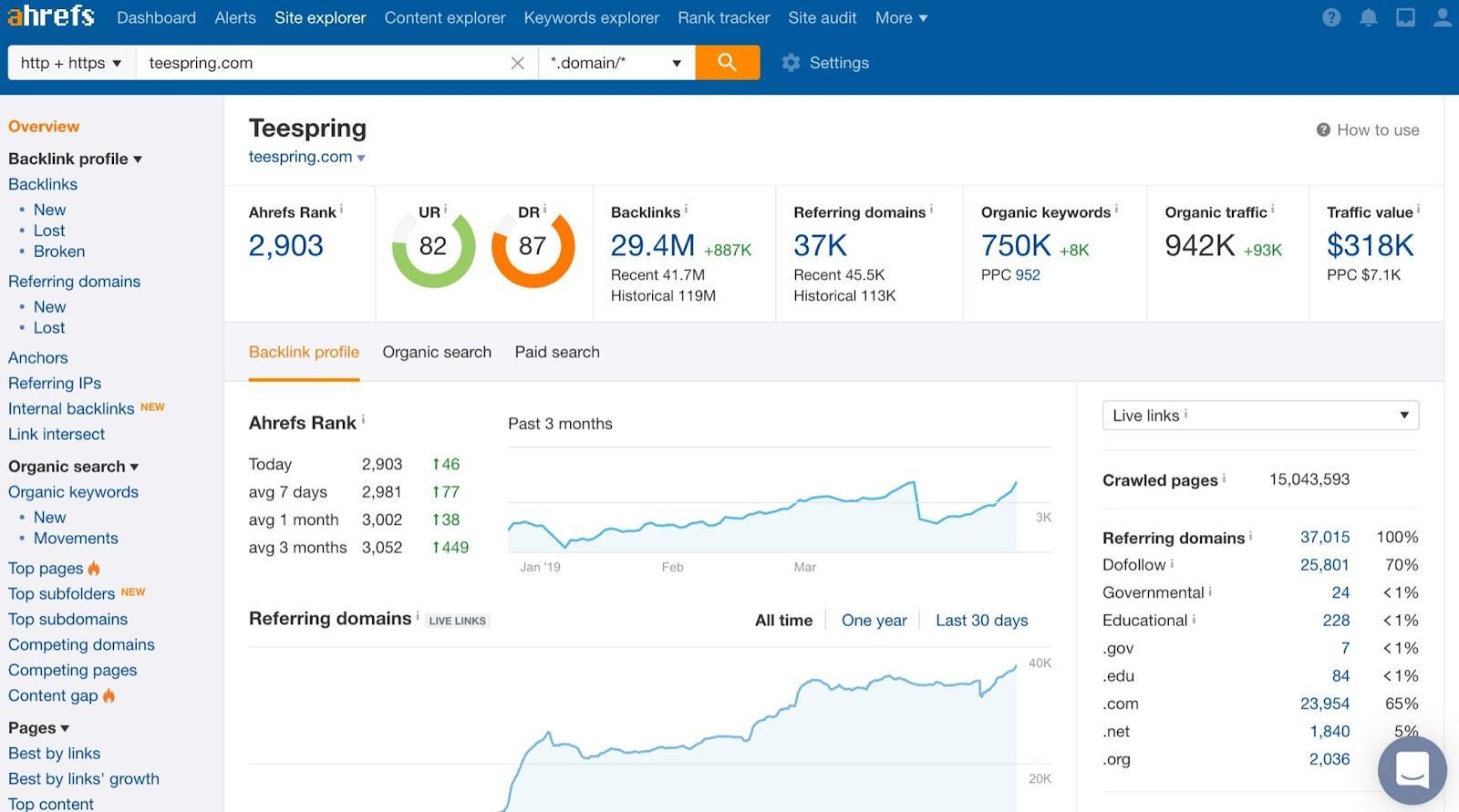
Google Search Console
Google Search Console measures and maintains a site’s presence in Google Search results.
Features include:
- Website Health Checks
- Google Crawls
- Index Alerts
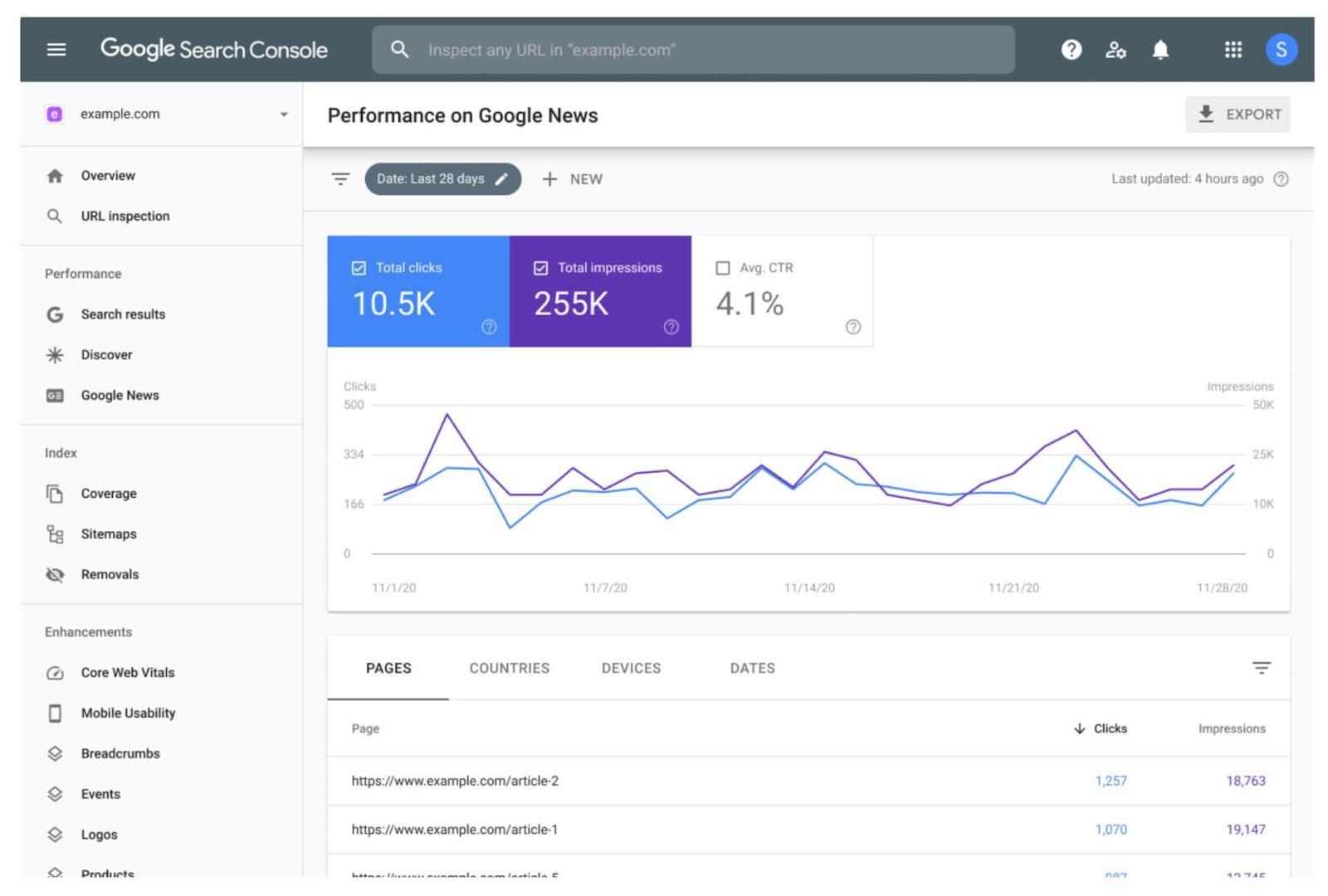
SEMrush
SEMrush helps run digital marketing strategies.
Features include:
- Keyword Research
- Keyword Strategy
- Backlinking Ideas
- SEO audits
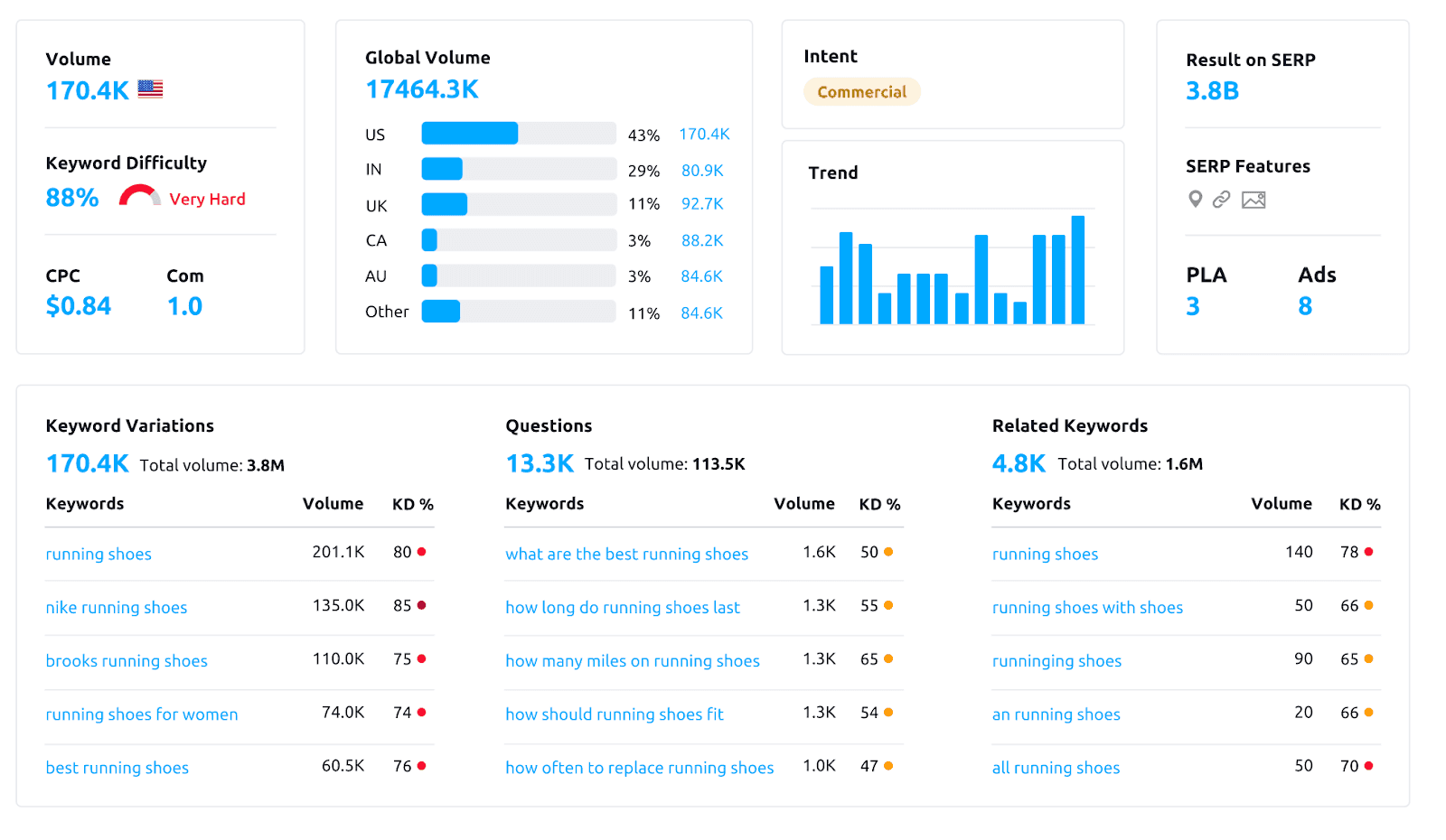
Lighthouse
Lighthouse is an automated tool for improving the quality of web pages.
Features include:
- Performance,
- Accessibility
- SEO Audits
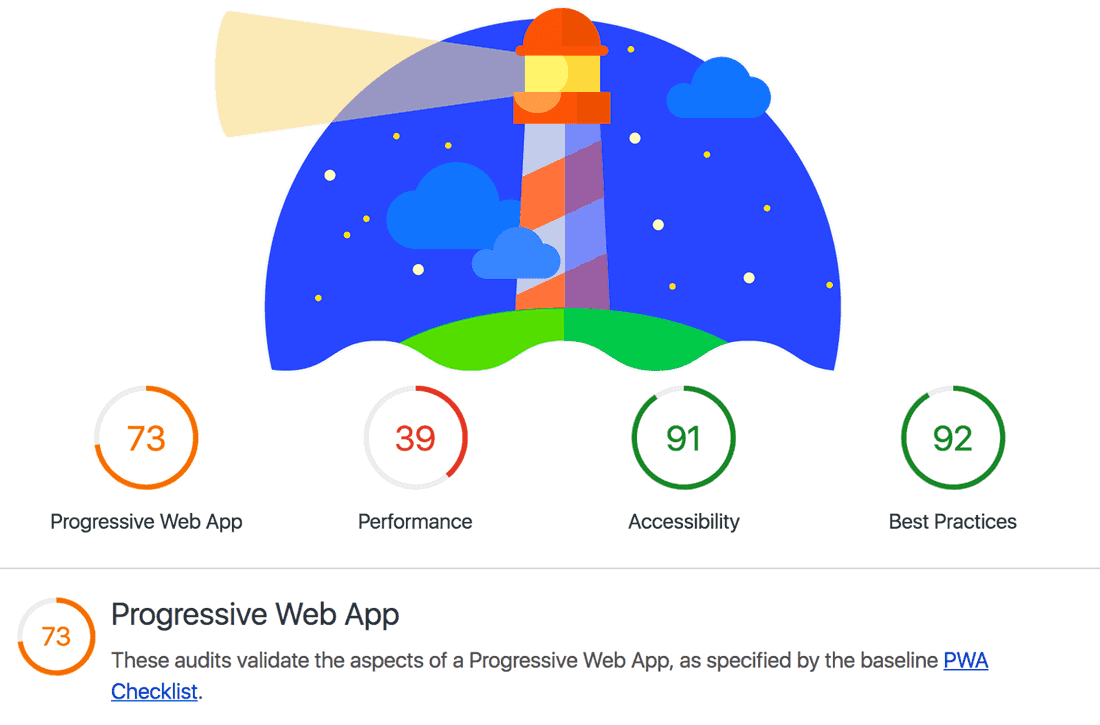
Headline Studio
Headline Studio assists in the creation of writing headlines.
Features include:
- Headline Creation
- Engagement Boosts
- SEO Growth
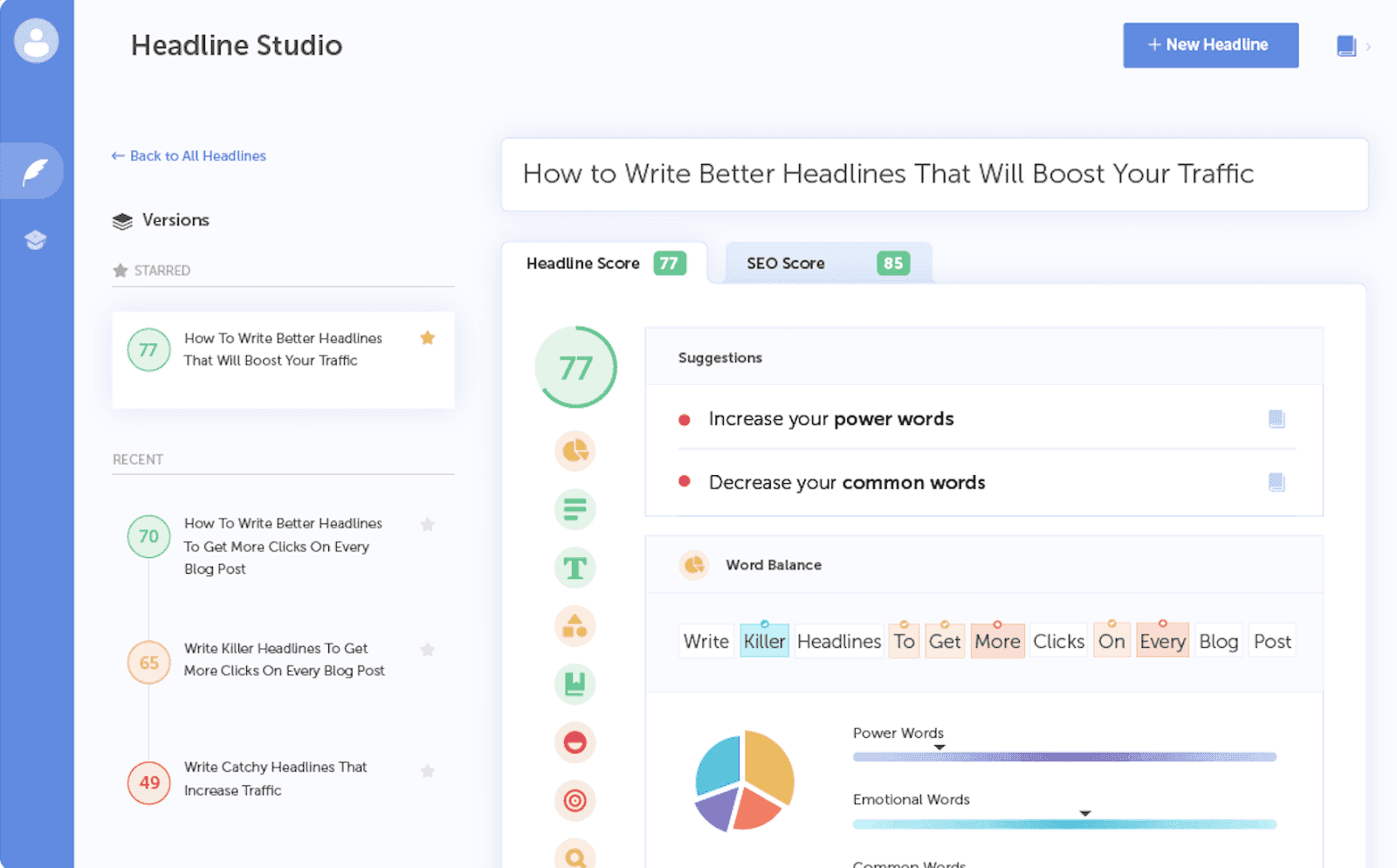
Ready to boost your SEO metrics? Generate optimized descriptions effortlessly with our SEO Description Generator!

